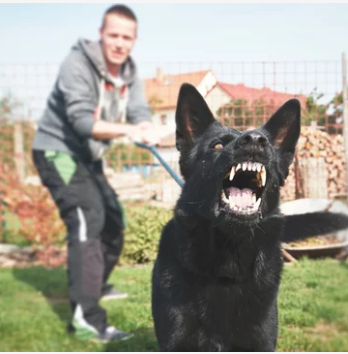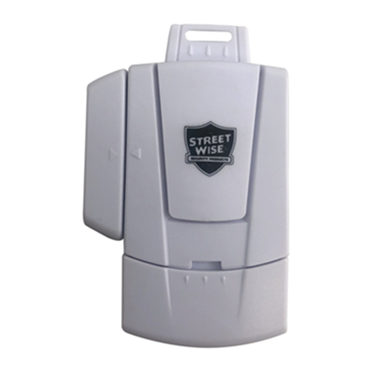How to Scare Away a Human Attacker or Animal
 In a world where personal safety is a top priority, knowing how to protect oneself from potential threats is crucial. Whether you're facing a human attacker or encountering wildlife such as bears or dogs, understanding effective techniques to scare them away can be invaluable. This blog post explores practical tips and strategies to empower individuals with the knowledge needed to deter potential threats.
In a world where personal safety is a top priority, knowing how to protect oneself from potential threats is crucial. Whether you're facing a human attacker or encountering wildlife such as bears or dogs, understanding effective techniques to scare them away can be invaluable. This blog post explores practical tips and strategies to empower individuals with the knowledge needed to deter potential threats.
-
Situational Awareness: The first step in personal safety is being aware of your surroundings. Pay attention to your environment, stay alert, and trust your instincts. Knowing what's happening around you can provide early warnings and allow you to take preventive measures before a potential threat escalates.
-
Project Confidence: Attackers, both human and animal, tend to target individuals who appear vulnerable. By projecting confidence through your body language and demeanor, you can discourage potential threats. Walk with purpose, maintain eye contact, and avoid appearing fearful.
-
Use Your Voice: One of the simplest yet most effective tools at your disposal is your voice. In a firm and authoritative tone, command the attention of the attacker or animal. Shouting loudly, using assertive phrases like "Back off!" or "Go away!" can startle and intimidate, making them reconsider their approach.
-
Personal Alarms: Carrying a personal alarm can be a powerful deterrent. These compact devices emit a loud and piercing sound when activated, attracting attention and startling potential attackers or wildlife. The noise can disrupt their focus and give you precious moments to escape.
-
Non-Lethal Self-Defense Tools: Consider carrying non-lethal self-defense tools such as a pepper spray,TASER device or stun gun. These items can incapacitate an attacker or deter aggressive animals without causing permanent harm. Familiarize yourself with the proper use of these tools and keep them easily accessible.
-
Bright Flashlights: In low-light situations, a bright flashlight can be a valuable tool. Shine the light directly into the eyes of an attacker or animal to disorient and temporarily blind them. This can create an opportunity for you to escape to safety.
-
Bear Spray for Wildlife Encounters: For those venturing into bear country, bear spray is a specifically designed deterrent. It contains a concentrated formula that can deter bears without causing long-term harm. Learn how to use bear spray correctly and keep it within reach when exploring areas inhabited by bears.
-
Back Away Slowly: If you encounter a wild animal like a bear or a dog, avoid sudden movements. Back away slowly while maintaining eye contact. Running may trigger a chase response, especially from dogs. Create distance without turning your back to the animal.
-
Create Barriers: If you're facing a human attacker, look for opportunities to create physical barriers between you and the threat. Move behind obstacles, use your surroundings for cover, or lock yourself in a secure area if possible. Delaying the attacker's access can provide a chance to call for help.
-
Seek Shelter: When facing wildlife, seek refuge in a secure location such as a car or a building. If you're unable to find shelter, climb a tree if facing a bear, or stand your ground if dealing with a dog. Staying composed and making yourself less accessible can deter their approach.
For Human Attackers Prevention is Key
- Awareness: Stay alert and focused on your surroundings, especially in high-risk areas or at night. Trust your gut instinct and avoid situations that feel unsafe.
- Planning: Research the area you're visiting and be aware of potential dangers. Share your plans with someone you trust and set check-in times.
- Personal Defense Tools: Consider carrying legal self-defense items like pepper spray or a loud alarm whistle. Familiarize yourself with their safe and effective use.
Confrontation Tactics:
- De-escalation: If confronted, stay calm and avoid appearing panicked. Maintain eye contact but avoid staring aggressively. Speak clearly and firmly, expressing your desire to be left alone.
- Distraction: Throw a harmless object like a bag or keys as a diversion, creating an opportunity to escape.
- Verbal Defense: Use strong, assertive commands like "Stop!" or "Back away!" in a confident tone. Shout for help if possible.
- Physical Defense: If absolutely necessary, defend yourself with pepper spray or your chosen tool. Remember, the goal is to deter, not engage in hand-to-hand combat.
Remember your primary goal is to escape to safety. If escape is not possible, fight back with everything you have to deter the attacker and protect yourself.
For Animal Encounters Understanding Animal Behavior is Key
- Predatory vs. Scavengers: Recognize the animal's natural behavior. Predators like bears or wolves hunt for prey, while scavengers like coyotes or raccoons might be more interested in your food or trash.
- Body Language: Learn to interpret animal signals. Flattened ears, bared teeth, and growling are clear signs of aggression. Relaxed posture and averted gaze indicate a less threatening presence.
- Territory and Cubs: Avoid disturbing animals near their food sources or with young cubs, as they are more likely to feel threatened.
Deterrence Strategies:
- Make Noise: Yell loudly, clap your hands, or blow a whistle to startle the animal and assert your presence.
- Make Yourself Big: Stand tall, raise your arms, and wave them to appear larger and more intimidating.
- Throw Objects: Throw rocks, sticks, or other safe projectiles to create a distraction and discourage the animal's approach.
Species-Specific Tactics:
- Bears: Avoid direct eye contact. If charged, stand your ground and yell aggressively. Play dead if attacked by a black bear, but fight back against a grizzly.
- Mountain Lions: Make yourself appear large and throw objects. Do not turn your back or run, as this can trigger their predatory instincts.
- Dogs: Stay calm and avoid eye contact. Stand still and avoid sudden movements. If attacked, curl up in a ball and protect your head and neck.
Remember these are general guidelines, and the specific actions you take should be based on the individual situation and the animal's behavior.
Additional Tips:
- Prevention: Wear bright-colored clothing in wilderness areas to make yourself more visible. Carry bear spray or other animal deterrents when venturing into risky environments.
- Education: Stay informed about local wildlife and their behavior. Knowing what animals to expect and how to react can be crucial in avoiding conflict.
- Training: Consider taking self-defense or wilderness survival courses to learn practical skills for de-escalating and surviving potentially dangerous situations.
Remember staying calm, aware, and prepared can drastically improve your chances of de-escalating or escaping a threatening encounter. By understanding both human and animal behavior and knowing how to react appropriately, you can navigate potentially dangerous situations with confidence and emerge unharmed.
While it's impossible to predict every outcome, this information can empower you to face fear with proactive strategies and a clear head. Take these tips to heart, practice the necessary skills, and remember: awareness, prevention, and decisive action can be your most valuable assets in navigating the world, safely and confidently. Personal safety is a fundamental right, and being prepared for potential threats is an essential aspect of it. By incorporating these techniques into your personal safety toolkit, you can empower yourself to navigate challenging situations confidently. Remember that prevention and avoidance are key, and the goal is always to escape safely rather than confront unnecessarily. Stay vigilant, stay prepared, and prioritize your well-being in every situation.



























